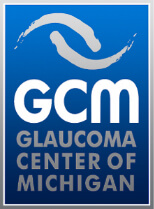
When treatment with eye drops, pills, laser or minimally invasive glaucoma surgery does not lower intraocular pressure to a safe level, your ophthalmologist may determine that glaucoma filtration surgery should be performed. One way to reduce pressure in an eye with glaucoma is to make a new drain in the eye. This type of surgery is called a trabeculectomy. It can be done with or without cataract surgery. It should be noted that the trabeculectomy is not used to improve vision, but rather to lower intraocular pressure and prevent further vision loss from glaucoma.
During this operation, a tiny piece of the wall of the eye, is removed by the surgeon opening a new drainage system.
This “drain” creates a bypass around the trabecular meshwork to reduce eye pressure by allowing the internal eye fluid (aqueous humor) to flow with relative ease through the new opening into a reservoir (bleb) underneath the conjunctiva (which comprises the surface of the eye). The fluid is then absorbed by the body.
The healing process is the normal and natural response to any surgery, including trabeculectomy, as the body treats the new opening no differently than any other wound or injury the body sustains. Trabeculectomy surgery is unique in that our goal is to fight this response as we need the drain to remain open so that the eye pressure remains controlled. The risk of the drain scarring down is reduced by utilizing anti-scarring medications during the procedure. When your doctor performs a trabeculectomy procedure, they will usually apply an anti-scarring medicine called Mitomycin (MMC) or 5-Flurouracil (5FU) to the surface tissues of your eye to reduce the chance of surgical failure. Use of these drugs with trabeculectomy surgery over has vastly improved the success rate of the procedure. However, sometimes even with use of these drugs in surgery your eye might exhibit an exuberant healing response and require more intervention.
This is an outpatient procedure performed in an ambulatory surgery center. The surgery is usually done under local anesthesia with IV sedation and usually with a special eye nerve block. Your doctor will want to examine you in the office the following day and you will be prescribed a regimen of postoperative drops. For several weeks following the surgery, your ophthalmologist will observe your eye closely and examine you frequently. It is not possible to predict your individual healing response to the surgery. If your eye pressure is running higher than intended, your doctor may use a laser during your postoperative visits to cut the sutures laying the trap door down to promote further flow of fluid from within the eye. On the other end of the spectrum, sometimes too much fluid may drain after surgery and the eye pressure may be lower than intended. In either case your surgeon might elect to intervene during your postoperative visits to help mitigate these responses. It may take up to 12 weeks after your surgery for the healing to be complete. During this time, it is not unusual for your intraocular pressure, as well as vision to fluctuate. If surgery was combined with cataract surgery, or even in some cases when not, you will likely be ready to change your glasses prescription at around 6-8 weeks after surgery.